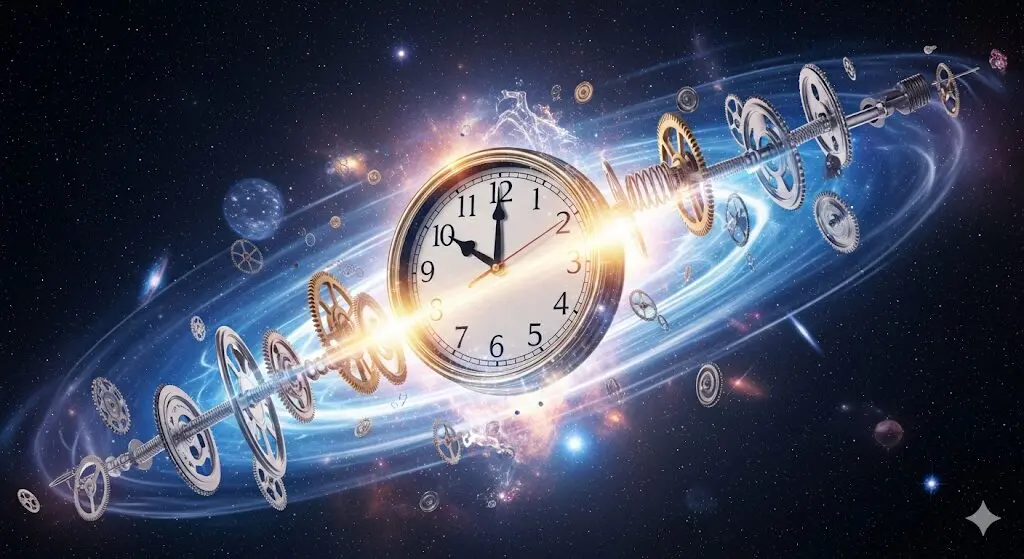In a groundbreaking development, researchers at the Institute for Quantum Optics and Quantum Information (IQOQI) in Vienna have unveiled a universal quantum rewinding protocol capable of reversing the state of a quantum system with an arbitrarily high probability of success. This discovery, published in collaboration with the Austrian Academy of Sciences, could reshape our understanding of time manipulation in the quantum world and open doors to new applications in quantum computing, communication, and fundamental physics.
The team — David Trillo, Benjamin Dive, and Miguel Navascués — have designed a mechanism that can take a quantum system back to a state it occupied at an earlier point in time. Unlike relativistic time dilation, which requires immense speeds or gravitational fields, this new protocol operates within the framework of quantum mechanics, using interference of superposed quantum paths to effectively rewind a system’s evolution.
The implications are profound: what once sounded like science fiction — “rewinding time” — is now a feasible operation in the quantum domain.
From Time Dilation to Quantum Rewinding
Classical relativity already showed us that time is not absolute. In Einstein’s theory, fast-moving spaceships or objects near black holes experience time more slowly — a phenomenon known as time dilation. But relativity can only slow down or stretch time; it cannot reverse it.
Quantum mechanics, however, offers new possibilities. Previous work by the same group introduced “universal time translation protocols,” which allowed quantum systems to be sped up, slowed down, or even reversed probabilistically. The limitation was that success rates were extremely low, rendering the protocols impractical.
The newly proposed method overcomes this limitation by achieving a rewinding process that can succeed with probability 1 after a finite number of steps — a theoretical guarantee of success.
The Science Behind the Protocol
At its heart, the protocol relies on one of quantum mechanics’ most famous features: superposition. A particle (or qubit, the basic unit of quantum information) is placed on a superposition of different paths, each experiencing distinct interactions. By carefully arranging how these paths interfere, the system’s state can be driven back to a past configuration.
The Building Block: The Quantum Gate Q
The researchers introduced a building block called the Q gate (also known as a “quantum SWITCH”). This gate operates by sending a quantum system along two possible trajectories:
- In the first path, the system evolves freely for some time and then undergoes an unknown interaction.
- In the second path, the order is reversed: the interaction comes first, followed by free evolution.
When the two paths are recombined, the interference between them produces mathematical operators (commutators and anticommutators of the evolution matrices). By repeatedly applying this mechanism, the system’s state can eventually be forced into a rewound configuration.
Why This Works
Mathematically, the key lies in the properties of 2×2 matrices (which represent qubits). The interference ensures that, after a finite number of repetitions, the system reaches a terminal interference pattern corresponding to the desired past state. Crucially, this result holds for almost any generic interaction, meaning the process is universal. It does not depend on knowing the system’s details or the specific nature of its interactions.
Probability of Success
Earlier quantum rewinding schemes struggled because their probability of success dropped to near-zero in realistic setups. This new protocol guarantees success in principle. Using probability theory and random walk modeling, the team proved that as long as the system interacts in a nontrivial way, rewinding will eventually occur with certainty.
Why This Matters
1. A New Tool for Quantum Computing
Quantum computers rely on fragile qubits that easily lose information through errors or unwanted interactions. A universal rewinding protocol could provide a way to “undo” mistakes or retrieve lost states, acting as a quantum reset button.
2. Applications in Quantum Communication
In quantum communication networks, where photons carry information, being able to rewind and restore their states could dramatically improve reliability and error correction, enabling more robust quantum internet architectures.
3. Probing the Foundations of Physics
On a more fundamental level, this protocol challenges our intuitive notions of time. While it does not allow us to build a time machine in the classical sense, it demonstrates that time reversal is not only possible but can be engineered systematically in controlled quantum systems. This bridges conceptual gaps between relativity, quantum mechanics, and even philosophical debates about the nature of time.
Open Questions and Future Directions
While the protocol is proven for two-level quantum systems (qubits), extending it to higher-dimensional systems remains an open challenge. Could the same principles apply to more complex quantum states, such as multi-particle entangled systems?
The researchers also suggest that their methods might help improve other “time translation” protocols, such as time transfer, where time evolution is distributed between multiple quantum systems. Currently, such schemes suffer from extremely low success rates, but the mathematical tools introduced here could change that.
Another pressing question is experimental scalability. Although a version of the protocol has already been demonstrated in photonic systems, realizing it in other physical platforms — like trapped ions, superconducting qubits, or atomic spins — will be essential to translate theory into real-world applications.
Time Control Enters the Quantum Era
The universal quantum rewinding protocol represents a conceptual and technical leap in our ability to manipulate time at the quantum scale. While not a time machine in the science-fiction sense, it provides physicists with something equally exciting: a reliable method to reverse quantum states, opening up new avenues in computation, communication, and our understanding of reality itself.
As research continues, one thing is clear: in the quantum world, the arrow of time is no longer a one-way street.
You can read the full research paper.
The article is authored by Mohsin Rasheed, Chief Editor of Everyman Science. You can reach him at editor@everymansci.com

